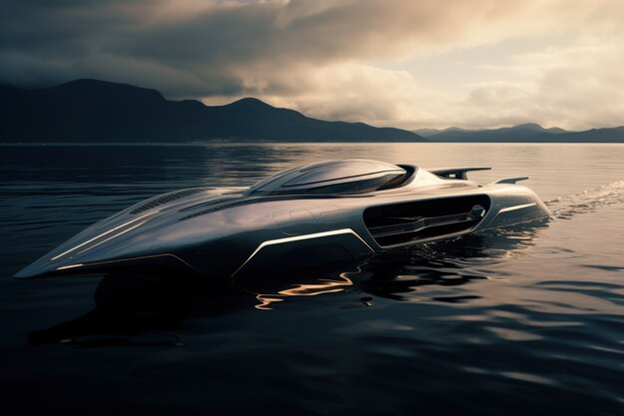
The worlds of automotive and marine engineering are intrinsically linked, with both industries striving to push the boundaries of power and performance. From high-performance sports cars to sleek and powerful watercraft for sale, engineers in both fields are constantly innovating to deliver unparalleled experiences to enthusiasts. In this article, we’ll explore the intersection of these two disciplines and examine how the principles of power and performance are applied in both automotive and marine engineering.
Aerodynamics and Hydrodynamics: Cutting Through the Elements
One of the key factors that determines the performance of both vehicles and watercraft is their ability to efficiently cut through the air or water. Aerodynamics and hydrodynamics play a crucial role in this, with engineers designing vehicles and hulls that minimize drag and maximize efficiency.
In the automotive world, aerodynamic design is essential for achieving high top speeds and improving fuel efficiency. Engineers use advanced computational fluid dynamics (CFD) simulations to optimize the shape of vehicles, reducing drag and improving stability at high speeds.
Materials and Manufacturing: Building for Performance
The performance of both vehicles and watercraft is not only determined by their design but also by the materials and manufacturing processes used in their construction. Engineers in both industries are constantly exploring new materials and techniques to create lighter, stronger, and more durable components.
Engine Design: The Heart of Power
At the core of both automotive and marine engineering lies the engine, a complex and meticulously designed system that converts the energy stored in fuel into the power needed to propel vehicles forward. Whether it’s a high-performance sports car or a luxury yacht, the engine is the heart that drives the machine.
In the automotive world, engineers are constantly pushing the boundaries of engine design, developing powerful and efficient units that deliver exceptional performance. The Toyota performance upgrades are a prime example of this, with the company’s engineers creating engines that are both powerful and fuel-efficient, allowing drivers to enjoy the thrill of high-performance driving without sacrificing practicality.
The Future of Power and Performance
As technology continues to advance, the future of power and performance in both automotive and marine engineering looks brighter than ever. Electric and hybrid powertrains are becoming increasingly common, offering the potential for even greater efficiency and performance.
In the automotive world, electric vehicles are already challenging the performance of traditional internal combustion engines, with models like the Tesla Model S Plaid offering incredible acceleration and top speeds.
Similarly, in the marine industry, electric and hybrid powertrains are being developed for a range of applications, from small recreational boats to large commercial vessels. These systems offer the potential for quieter, cleaner, and more efficient propulsion, while still delivering the power and performance that enthusiasts demand.
Conclusion
The intersection of automotive and marine engineering is a fascinating and dynamic field, where the principles of power and performance are applied in innovative and exciting ways. From the design of powerful engines to the optimization of aerodynamics and hydrodynamics, engineers in both industries are constantly pushing the boundaries of what’s possible. As technology continues to advance, the future of power and performance looks brighter than ever, with the potential for even greater efficiency, performance, and sustainability. Whether you’re a car enthusiast or a boating enthusiast, there has never been a more exciting time to be part of these dynamic and innovative industries.





More Stories
How Washington, D.C. Workers Can Protect Themselves Against Retaliation in the Workplace
Navigating Business Litigation: What Every Small Business Owner Should Know
How to Compare APYs on High-Yield Business Accounts